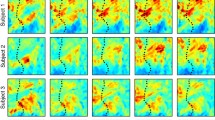Abstract
Functional magnetic resonance imaging (fMRI) studies of the human motor system have commonly used movement paradigms which contain a dynamic component; however, the relationship between the fMRI signal for motor tasks with and without a dynamic component is not known. We have investigated the relationship between the fMRI signal during a static finger flexion task and during dynamic finger flexion at 1–3 Hz, each at two levels of force (5% and 10% of maximum voluntary contraction). A small fMRI response could be recorded from only a few subjects during the static tasks. In contrast, a substantial fMRI response occurred during dynamic tasks in all subjects at both levels of force. The fMRI response was not significantly correlated with force or movement rate during the dynamic tasks. It is concluded that the factors responsible for generating an fMRI response are fundamentally different during steady contractions compared to those involving a dynamic component, and that the fMRI signal may be more sensitive to changes in the pattern of neural activation rather than the ongoing firing rate or extent of activation.
Similar content being viewed by others
Author information
Authors and Affiliations
Additional information
Received: 24 March 1998 / Accepted: 9 October 1998
Rights and permissions
About this article
Cite this article
Thickbroom, G., Phillips, B., Morris, I. et al. Differences in functional magnetic resonance imaging of sensorimotor cortex during static and dynamic finger flexion. Exp Brain Res 126, 431–438 (1999). https://doi.org/10.1007/s002210050749
Issue Date:
DOI: https://doi.org/10.1007/s002210050749




